Are you tired of the early low voltage alarm? If you’re seeking ways to improve efficiency and maximize flight time of your FPV drone, whether for racing, freestyle, or long-range flying, this article is for you. Quadcopters (or multirotors in general) aren’t the most efficient aircraft compared to planes and fixed wings, therefore they tend to have relatively short flight time. Here are some tips to help your FPV drone stay in the air longer.
If you are interested in long range flying, take a look at my long range FPV guide: https://oscarliang.com/long-range-fpv-flying-mini-quad/
Table of Contents
Flight Time vs. Hover Time
There’s a distinction between flight time and hover time. You can almost always get the same hover time on the same quadcopter and battery under the same conditions by hovering at the same spot. However, flight time can vary significantly depending on how fast you fly and how active you are on the throttle.
Lighten the Drone
The more a drone weighs, the more thrust and power it needs to stay in the air. Reducing the weight of your FPV drone can significantly enhance not only its flight time but also its overall agility. Every gram you save is a few extra seconds in the air.
Consider removing any unnecessary accessories like LED strips, TPU parts, and prop guards. Switch to lighter components, such as motors and frames, to shave off extra grams. I’ve detailed how I reduced the weight of my drone in this tutorial: https://oscarliang.com/how-to-make-fpv-drone-lighter/.
Even the minuscule components can add up. Swapping out steel bolts and nuts for titanium and aluminum ones can cut weight by nearly half. Check out info about drone screws in this article: https://oscarliang.com/screws/.
Bigger Battery
Every battery comes with a capacity rating in mAh. It seems straightforward to just get a larger battery for longer flight times. However, there’s a balance to strike. An oversized battery may hinder performance, leaving your drone feeling sluggish and under-powered. When it’s too heavy it can actually reduce flight time.
To find your drone’s optimal battery weight limit, test fly it with additional payloads. When you feel it flies terrible and difficult to control, then you know it’s too heavy. The total weight of the payload and existing battery would be the weight limit of the biggest battery your drone can handle.
When comparing several batteries for optimal flight time, energy density is an important consideration. Energy density is calculated by multiplying the voltage and capacity of the battery, divided by the weight. The higher the energy density, the more energy the battery stores per gram.
C-Rating
For missions where long flight times are essential, I typically opt for batteries with a moderate C-rating.
Batteries with the same capacity can vary significantly in size and weight due to their C-ratings.
While a C-rating that’s too low may lead to inefficiency from voltage sag, an excessively high C-rating designed for racing, also introduces inefficiencies due to the increased use of metal to lower internal resistance for high-current demands. This extra metal, of course, adds to the battery’s weight. There’s a sweet spot in C-ratings that depend on your drone’s specific setup for optimum efficiency.
Battery Health and Maintenance
Battery maintenance is a complex subject deserving its own discussion. Over time, batteries degrade and their capacity diminishes. It’s crucial to maintain them properly, avoiding overcharging and over-discharging to prolong their lifespan. For a comprehensive guide on battery care, visit: https://oscarliang.com/lipo-battery-guide/
Li-Ion Batteries
One popular approach is to use Li-ion batteries instead of LiPo.
That’s because Li-ion batteries have much higher energy density than LiPo, but lower in discharge rate. They can typically offer approximately double the capacity for the same weight. You can learn more here: https://oscarliang.com/li-ion-battery-long-range/
Keeping Your Battery Warm
Did you know that your drone batteries work more efficiently when they’re warm? This might explain why your flight times are noticeably shorter in winter compared to summer. It’s quite interesting to discover that the same battery, when kept warm – say, in your pocket prior to a flight – can significantly extend your flight duration. This simple yet effective trick can make a substantial difference in colder weather, ensuring you make the most out of your flying sessions.
Pace Your Flight
Nothing drains a drone’s battery faster than going full throttle all the time. Flying at top speeds sure is a necessity sometimes, however, if your main priority is trying to maximize flight time, then perhaps going easy on the throttle would be a good idea.
Fly your drone forward at a steady speed, try to keep your throttle at a constant level without moving it up and down, because that would speed up and slow down the motors constantly and it wastes energy.
Accelerate smoothly and keep everything in the down-low. Avoid making sudden changes of speed or directions. By doing so, you will definitely extend the flight time of your drone!
Keeping your throttle at the same level while maintaining the desire altitude and speed takes some practice, but once you get the hang of it you will see your flight time extended noticeably.
Minimal Stick Movement
Every input on your radio sticks translates to motor speed changes, which in turn generates motor heat and depletes the battery quicker. For those looking to maximize flight time, gentle flying with minimal stick movements is key. Similar to having steady throttle management, less is more.
Pick the Right Weather Conditions
To maximize flight time, picking a calm day to fly is key. Avoid flying in windy conditions as the wind resistance can significantly decrease flight time.
Cold weather is also tough on batteries and reduces your flight time significantly. LiPo batteries work best at 77-95° F (25-35° C). Below this temperature, batteries might appear to be less “punchy” and have worse voltage sag, which can result in shorter flight time. Therefore it’s a good idea to warm up your batteries before flight, for example, putting it in your pocket. Learn more about flying in the winter here: https://oscarliang.com/fly-fpv-winter/#LiPo-Performance-in-Winter
Efficient Motors and Propellers
Motor and propeller efficiency can be tested on a thrust stand or researched online. Efficient motors provide more thrust per watt and operate best within certain throttle ranges. You should consider your flying habits and needs, so that you choose one that fits your flying style.
Motor size and weight also matter. If a smaller, lighter motor meets your requirement, it’s less efficient to use a bigger, heavier motor. Relatively lower KV is also preferred for lower amp draw if you just want to have relax cruising. You can learn more about FPV drone motors in this post: https://oscarliang.com/motors/
Propellers with fewer blades are generally more efficient, i.e. 2-blade and 3-blade propellers. Propellers with a lower pitch can also reduce amp draw, as long as your drone is for relax cruising. If you want higher top speed, it often makes more sense to have a propeller with at least 3 blades, and a higher pitch. See my propeller recommendations here: https://oscarliang.com/propellers/
Larger propellers tend to be more efficient than smaller ones. They also produce more thrust, enabling the drone to carry a bigger battery. However it’s important to pair the right propeller with the right motor size and KV. Never over-prop or under-prop if you want to achieve optimal efficiency. Find the ideal motor and propeller combination with this resource: https://oscarliang.com/table-prop-motor-lipo-weight/
Optimize Center of Gravity
If your drone’s center of gravity (COG) is not properly balanced, some motors might be working harder than the others. Having 4 motors working at similar level would be ideal for efficiency.
Tuning
Brushless motors become less efficient when they are hot. By tuning your PID and filters, you can minimize vibration and motor overheating, leading to more efficient flight.
- Learn about what PID is in this guide: https://oscarliang.com/pid/
- Learn about what filters are in this guide: https://oscarliang.com/betaflight-filtering/
- Learn how to tune PID and filter in this guide (no blackbox needed): https://oscarliang.com/fpv-drone-tuning/
Optimize ESC Settings
Certain ESC settings can improve efficiency, such as higher PWM frequency. There’s no free lunch, it might reduce the raw power of your drone, but if flight time is your priority these settings are worth looking at. Learn about BLHeli settings here: https://oscarliang.com/best-blheli-32-settings/
For 1S Tiny Whoops this makes a day and night differences by switching to a higher PWM frequency. By increasing PWM frequency I was able to get significantly longer flight time, but at the cost of motor braking:
- 96KHz: 4:00
- 48KHz: 3:40
- 24KHz: 2:50
However, this efficiency gain seems to be less noticeable on larger quads like 2-inch or bigger. The main benefits of running higher PWM frequency on these larger rigs seems to be improved smoothness, but again at the expense of motor braking. 48KHz is the most popular option as it offers a balance between smoothness and motor responsiveness.
Conclusion
To get the longest possible flight time, the general rule should always be “less is more.” Less flashy TPU parts, less weight, less flips and rolls, less throttle movements, would mostly, if not always, result in more flight time. By following each of the above steps, I am sure that you will be able to gain quite a few more minutes in the air.
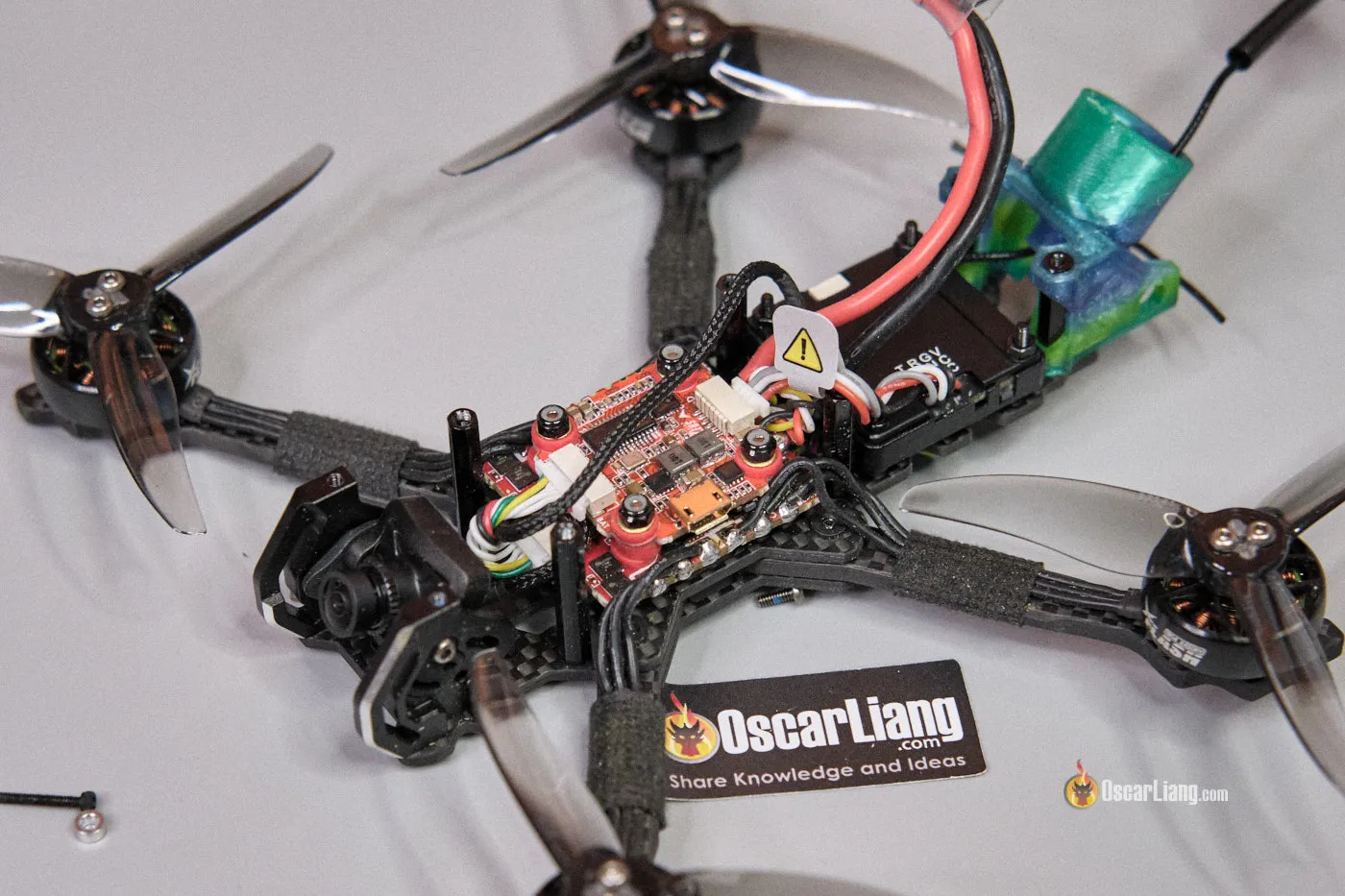

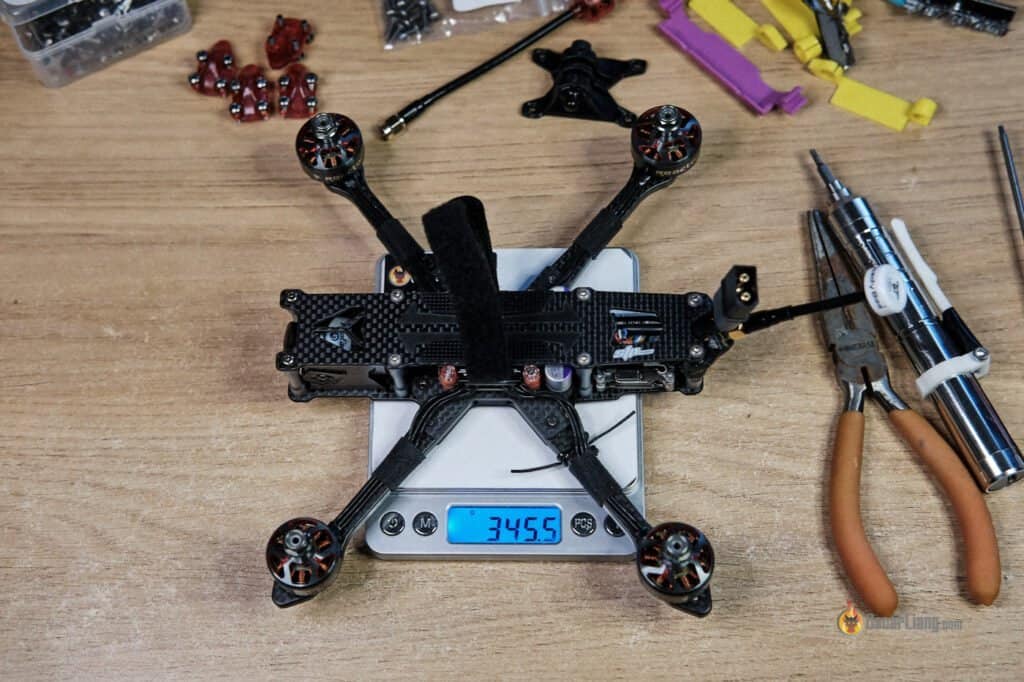

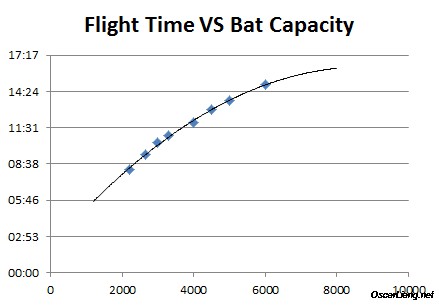
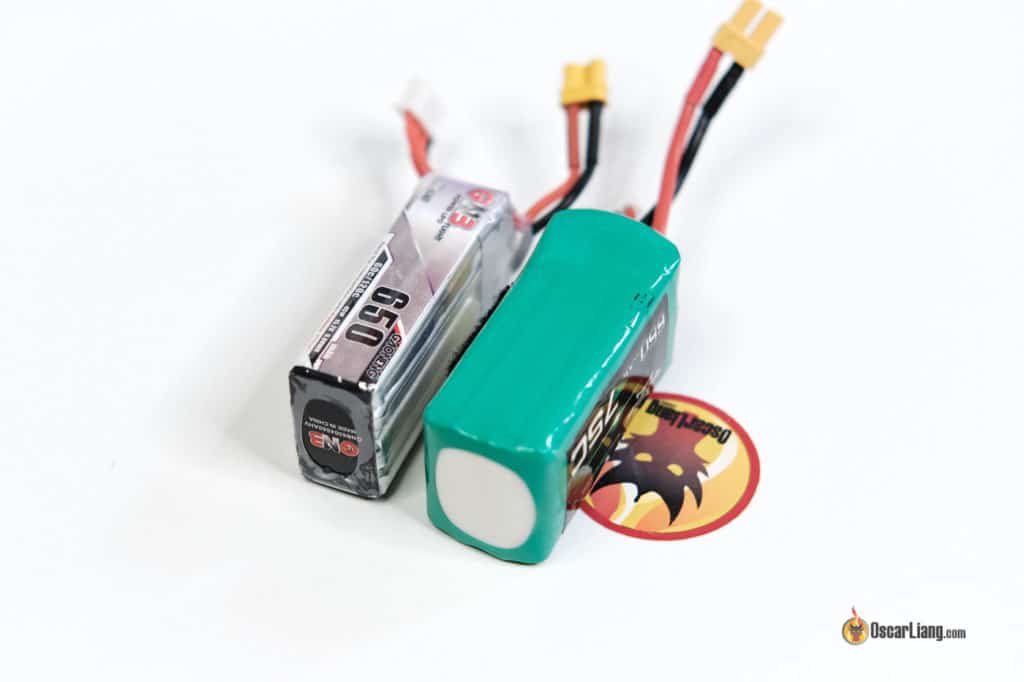





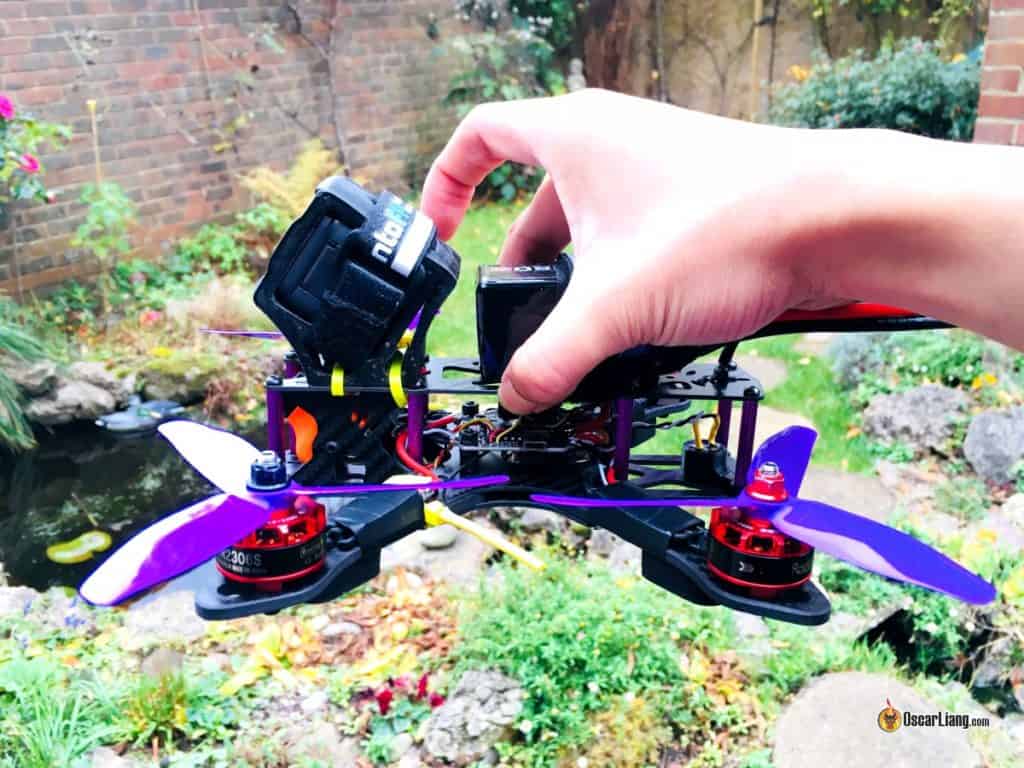
2 comments
Maybe they have smaller effects, but increasing frame stiffness and soft-mounting FCs should increase efficiency somewhat. Stiffer frame means higher resonances which the FC can better filter, and soft-mounts are like noise filters. Also getting obstructions out of the way of the props (ie wide frame arms) will help but is often hard to pair with high stiffness.
Hi Oscar,
I appreciate your website, specially the monthly sales pages. Bought a mobula 8 for a good deal last month thanks to you.
I am new the drone hobby and have gone digital.
What I found out recently is that there is no audio transmitted with digital systems, at least with DJI.
I am in the process of building a 5″ freestyle drone HD, using DJI O3 air unit.
My FC+ESC stack will be the SpeedyBee F405 V3. My question is, is it possible to use DJI O3 Air Unit for the VTX and use the Zeus Nano VTX just for the audio in the FC? I do want to hear the sound of those props.
Thanks.
Ron